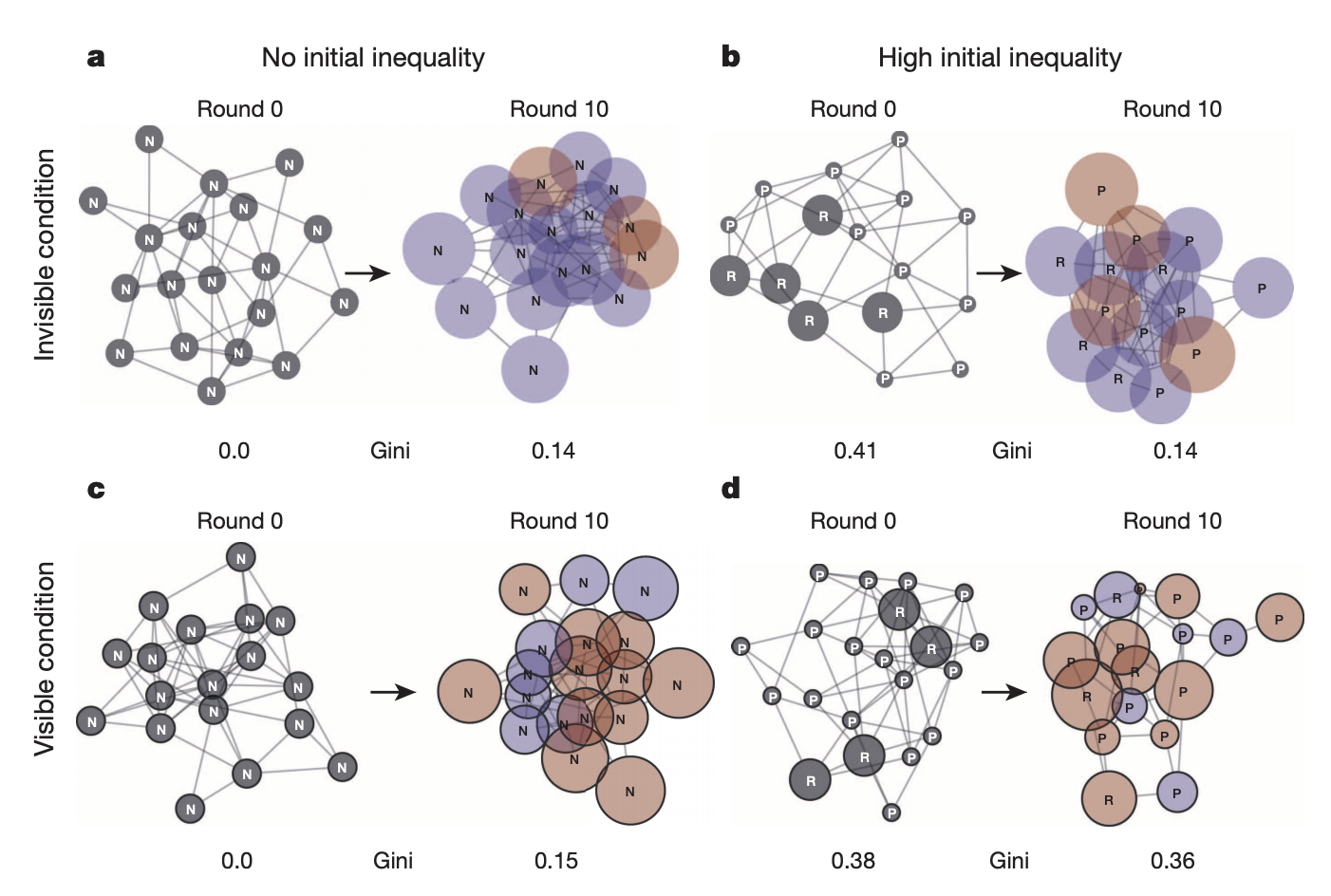Lately, I’ve been following the web site of Yale Institute for Network Science’s website Human Nature Lab. It’s a great source to follow the latest academic studies on networks. Even better, they develop and share open source software for all of us to use. One of them is, Trellis; a suite of software tools for conducting social network analysis, but today I would like to talk about Breadboard. It is a software for developing and conducting human interaction experiments on networks. I have read one of the articles shared on the web site to understand how the software can be used in a research design.
The paper (Nishi, A., Shirado, H., Rand, D. G., & Christakis, N. A. (2015). Inequality and visibility of wealth in experimental social networks. Nature, 526(7573), 426.) investigates the possible determinants and consequences of economic inequality by conducting online experiments on social networks with the help of Breadboard software. They carried out series of experiments with 1,462 participants. Subjects were placed in groups with an average size of 17. The subjects played a cooperation game lasting 10 rounds with their neighbors in their network. In all groups, the overall per capita initial wealth is 500 units and that amount is distributed to subjects equally in one scenario and unequally in two other scenarios. They also manipulated the “visibility” of local neighbors’ wealth in the network. In the visible condition, subjects could see their wealth and also the wealth of their directly connected neighbors. In the invisible condition, the subjects could see only their wealth. After being assigned randomly to one of the three conditions (no-initial inequality, low initial inequality, high initial inequality), the subjects play a cooperation game. Here is the visual representation of the human social networks with different conditions:

You can reach the full text from this link, and read the details of the research design and findings. This paper and the software that is used to carry out the experiment are good examples of how the digital media environment transform the way we do research. I believe this tool can help us to conduct laboratory experiments online in many different ways, while studying consumer behavior and the effectiveness of advertising. I’m currently thinking about how to conduct such an experiment to understand the consumers’ anticipations of the future in different scenarios such as; privacy, security concerns, well-being, personalization, virtual worlds and so on.
P.S. LIONESS Lab is another free web-based platform for interactive online experiments. We may cover it in another blog post.